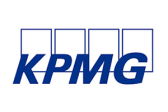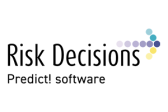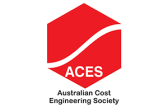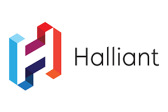The tenth biennial RISK conference was organised by the Risk Engineering Society.
The theme was ‘Risk engineering for a resilient 2030’, designed to appeal to engineering professionals practising risk management, risk analysis and risk-based decision making processes in an engineering context.
In the face of global uncertainty and a world-wide commitment to achieve net zero emissions by 2050, the engineering profession is facing a unique range of challenges including:
The engineering profession has an opportunity to contribute to the success of this critical target.
In Australia a pipeline of investment of more than $800 billion is expected to be spent on large scale renewable projects. This includes investment in onshore and offshore wind farms, solar farms, retirement of more than 60 per cent of coal-fired generation plants, approximately 10,000km of additional electricity transmission lines and 100 new hydrogen power generation projects. Off the back of this investment, sectors such as defence, infrastructure, telecommunications and IT are likely to prosper.
Resilience is an integral part of the theme of this year’s conference because understanding and managing risk engineering can help us to foster the resilience needed to overcome the challenges the profession faces.
Day one
Welcome to Country
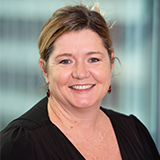
Conference welcome
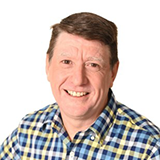
Premier sponsor welcome
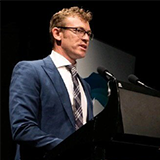
Andrew O’Connor is an asset management and reliability engineering professional with experience in the defence, aviation, maritime, mining, utilities and nuclear sectors. Andrew has a PhD in Reliability and Risk, is a Certified Asset Management Assessor (CAMA) and a Certified Reliability Engineer. Andrew is a successful business owner having co-founded two award winning engineering consultancy businesses.
Andrew is passionate about ensuring asset owners make structured, data-informed decisions to maximise the value of their assets. Andrew has become well known for creating decision frameworks and improving the performance of assets using deep data analytics and simulation tools. Andrew’s has also been sought as a subject matter expert on five major reform programs, including Plan Pelican (Army aviation), Plan Centaur (Army maintenance), MPIP (Air Force maintenance), Coles Review (submarines), N4 Library (Navy policy) and OPIP (Glencore mining equipment overhauls).
Andrew completed a PhD from the Center for Reliability and Risk at the University of Maryland in the US developing qualitative risk assessments methods for nuclear power plants. Andrew authored the book, Probability Distributions Used in Reliability Engineering, published by the RIAC. Andrew’s research saw him win the George Apostolakis Fellowship award as a young professional in the PRA industry. Andrew is currently a National Board Member of KPMG Australia and Partner in Charge of its Engineering and Asset Management team.
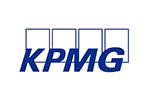
How can risk be used to optimise the push to net zero while adapting to climate change?
Achieving net zero carbon emissions is a complex challenge that involves transitioning to low carbon energy sources, improving energy efficiency, changing consumption behaviours and using carbon capture, utilisation and storage technologies.
These transitions have both upside and downside risks for individual companies, industries, communities and governments. This talk will explore:
- How can risk be used to optimise the push to net zero while adapting to climate change?
- What are some of the key considerations that need to be included in this type of risk management work?
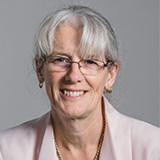
Professor Maureen Hassall is Director and Professorial Research Fellow of UQ’s Minerals Industry Safety and Health Centre and director of UQ R!SK at The University of Queensland. She has more than 30 years’ experience working in industry and in academia developing and leading innovative transformational change projects in the areas of risk management, human factors, systems and process safety engineering and organisational development.
She is passionate about delivering evidence-based research and education solutions that deliver significant and sustainable improvements to the health, safety and wellbeing of workers, work processes and workplaces.
Ukraine’s chaos and opportunity: from recovery to transformation
The invasion of Ukraine ion 24th February 2022 created shockwaves not just across Europe, but in terms of the impacts that it had on multiple global networks including oil and gas, global food security, inflationary pressures and the recalibration of post-Cold War relationships.
Within Ukraine itself, the immediacy of the need to response to the invasion was combined with an understanding that this could also be the opportunity to re-set Ukraine as a forward-looking member of the European family, rather than one of the least progressive of the post-Communist countries. Dr David Rubens was in discussions with senior members of the Ukraine government framework within the first week of the invasion, and has been closely involved with many of the conversations concerning Ukraine’s post-conflict destiny.
This presentation will look at some of the issues that have been explored during this period, and the lessons learned for all countries in trying to create a model for their future development in the face of the unprecedented challenges that we are currently facing.
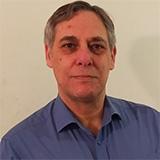
Dr David Rubens is recognised as a global authority on all aspects of strategic risk and crisis management, and particularly as it involves complex crisis environments. He established the Institute of Strategic Risk Management in 2018. It now has international chapters in more than 35 countries across Southeast Asia, the Middle East, the US, Australasia and Eastern Europe, and a vibrant global network of academic, research and think-tank institutions.
Dr Rubens is a Professor in the United Nations University European Centre for Peace and Development, where he is Director of their Strategic Risk and Crisis Management programme, is a member of the UK National Preparedness Commission and has worked with major global corporations and government agencies in helping them model and prepare for the complex risks of the 2020s.
Morning tea
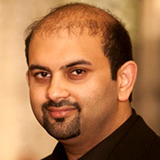
Ali Ammar joined InEight in 2019 and currently works as a Senior Solutions Engineer for APAC. He brings more than 16 years of experience in delivering project management solutions for construction and engineering, transport and infrastructure and the energy industry. Ali is also a certified Project Management Professional (PMP) and a Scheduling Professional (PMI-SP) via the Project Management Institute.
Ali enjoys his role in solution pre-sales and also in developing industry-specific, process-driven solutions. Prior to joining InEight, Ali held Solutions Director and consulting roles at DXC, Primavera Australia and CMCS. In these roles, he gained broad knowledge on empowering customers with their digital transformations, integrated project controls solutions and software implementations. Ali holds a bachelor’s degree in computer science from the University of Houston.

The case for an international standard on infrastructure resilience
Professor Varga will explore societies dependency on the services delivered by critical infrastructure systems and the ever-increasing challenges caused by constrained decision making, interdependence and frequent hazards, discussing the approach of an international standard for infrastructure resilience.
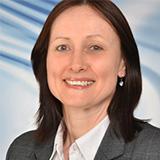
Professor Varga has a chair in Complex Systems in UCL's Department of Civil, Environmental and Geomatic Engineering. Her area of research is economic (linear) infrastructure which provides critical services to people, society and the economy.
Professor Varga directs the Infrastructure Systems Institute which investigates grand challenges on the resilience, sustainable innovation and efficiency of integrated transport, energy, water, waste and telecommunications systems. Prior to joining UCL, she was Professor of Complex Infrastructure Systems at Cranfield University, UK where she led a team on the computational modeling of interventions into infrastructure systems, such as water, energy, food nexuses.
Her PhD is on the evolution of the supply chain in the aerospace manufacturing industry. It investigated the co-evolution of firms in aerospace and the emergence of synergetic characteristics that created waves of industrial transitions.
Risk, systems and decisions: the opportunity for risk engineers in public policy
In a time of sharpened community focus on wicked public policy challenges, an unlikely hero emerges. Risk engineers who are community benefit oriented with a flair for systems and a taste for a big hairy problems are in prime position to bring transferable skills to synthesise and coordinate an often scattered landscape. We’re talking real, on the ground impact on issues such as climate change, economic inequality and disaster resilience.
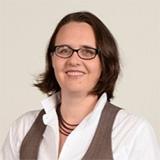
Astrid is a public sector engineer, mentor and risk and strategy professional who is excited by the potential to solve complex public policy challenges using systems thinking. She has practiced across defence, infrastructure, maritime and emergency management, and is currently practicing regulatory strategy in circular economy.
Astrid is the Immediate Past President of Engineers Australia’s Victoria Division and a member of National Congress. She chaired Engineers Australia’s Roundtable on Sustainability and Resilience of Infrastructure.
Originally trained in mechatronics engineering, Astrid holds an MBA from Melbourne Business School and attended decision analysis courses at Stanford. She is a Fellow of Engineers Australia and Chartered Professional Engineer.
Combustible cladding: developing risk-based solutions
Cladding Safety Victoria (CSV) has been established by the Victorian Government to deliver the $600 million investment to tackle the issue of combustible cladding on privately-owned residential apartment buildings across Victoria. As a result, CSV provides funding for the rectification of external wall combustible cladding of eligible higher-risk, class 2 residential apartments.
By sharing his experience, Ashley will discuss CSV’s risk-based approach to addressing combustible cladding risk. As the first program of its kind in the world, Ashley will share some interesting insights, risks, challenges and benefits of this important program with attendees and will highlight how Victoria is tackling combustible cladding risks in the community.
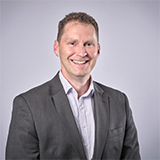
Bringing extensive and senior experience from both government and private sectors to the role, Ashley Hunt is the Executive Director, Program Delivery for Cladding Safety Victoria.
Prior to this, Ashley most recently worked as the Director of Infringement Management and Enforcement Services Reform Program at the Department of Justice and Community Safety, implementing a large ICT transformation project. Prior to this role, he was the Director of Energy Emergency Management at the Department of Environment, Land, Water and Planning and spent an extensive period the Director of the Powerline Bushfire Safety Program.
Lunch
Lessons we learnt from implementing an business - wide quantitative risk process
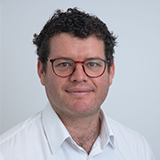
Pieter Rautenbach is a project controls professional with more than 20 years of success in project and program delivery for contractors, owners and tech firms. He's known for innovative approaches, holding a Quantity Surveying Bachelor's and Post Graduate Honours from the University of Pretoria.
He's a chartered Quantity Surveyor (RICS) and lectures in Australia's Bond University Masters of BIM program. He recently spearheaded the quantitative risk methodology implementation at a major multinational company.
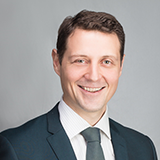
Jonathan Shirley is the Portfolio and Analytics Manager for BHP Projects in Brisbane. A civil engineer with a Master of Management Science, he has more than 20 years’ project experience across construction, oil and gas and mining sectors.
Throughout his career he has held senior study, delivery and functional project roles that have helped develop a diverse and effective project risk quantification skillset. He has a passion for practical project risk quantification and has spent the last four years leading the implementation of a standardised hybrid project risk quantification methodology across BHP projects.
The implications of poor leadership on project risk
Major projects require a wide range of design and construction specialists that need to be fully integrated. The failure of specialist design teams and individuals to adequately integrate into a wider team can result in greater risks being taken by the design companies and ultimately the contractor and client.
This presentation discusses how these issues arise and how they can be overcome with appropriate leadership and management through the lens of a geotechnical team on a major road infrastructure project.

Chris has more than 33 years of experience in geotechnical and civil engineering. He has worked in Australia as well as overseas in Hong Kong, China and the UK. He has led design teams on a number of significant projects in the road, rail, energy and water sectors.
He has several industry roles including being a chair of an Australian Standard committee, immediate Past Chair of the QLD Chapter of the Australian Geomechanics Society (AGS) and a member of the QLD Division Committee of Engineers Australia. He has a PhD and MBA from UQ and has lectured at QUT.
How right is that feeling in my bones? A Monte Carlo user story
How right is that feeling in my bones? With enough experience under your belt, you can start to get a good gut instinct for pricing projects. An experienced cost estimator is worth their weight in gold and will also have a good instinct for the cost of a piece of work and key factors that will drive it up or down. However, their work will be under scrutiny and your organisation will be ultimately accountable for any deviation from the original cost estimate.
In this presentation, I will show how we worked with one of our clients to successfully bid a National Highways project to enhance a trunk road junction. Using an anonymised case study, I will demonstrate how, utilising Risk Decisions Predict! Analyser Software, a Monte Carlo Analysis was used to harness and enhance the expertise within the organisation. This enabled effective risk and uncertainty conversations to take control of costs and establish a winning price, effectively combining accountability for it and the ability to sleep at night!
We’ll use Monte Carlo Analysis in our Predict! Analyser Software to decide:
- what goes into the base price and what doesn’t
- the conversations to have about risk and uncertainty
- how certainty and confidence can be gained in a bidding scenario
- how attention and limited resources can be targeted at the key cost drivers.
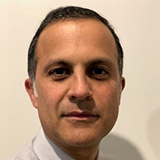
Fernando is a highly skilled risk management and technical expert, with extensive experience of training, facilitating, and implementing project, programme, product and business risk management systems, for Risk Decisions government and industry clients, across the APAC region. With more than 20 years’ experience working with large and medium size organisations, Fernando has a wealth of practical experience and vision for how they can improve business performance through risk management framework and good practice.
Fernando played a major part in the design and development of technical enhancement to increase quality automating key areas within business process. Fernando is an excellent communicator, at all levels within an organisation, with a practical approach to problem solving.
Successful PMO for developing and delivering portfolio capital works by universities
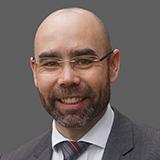
Peter has more than 23 years of engineering, project management and transformation experience. Peter has led numerous PMOs and has led major programs of work as a Project Controls Manager in the mining and hydrocarbon industry.
Peter is currently an Executive Director for Western Sydney University and leads a range of strategic transformation programs and leads project risk management for the organisation.
Peter has studied engineering, economics and project management, and has worked across a range of industries, including infrastructure, transport, construction, oil and gas, mining, and higher education.
Peter describes himself as the ‘Swiss Army Knife” of the organisation.
Panel Q&A
Q&A for all concurrent 1 sessions.
Afternoon tea
Managing complexity in major infrastructure projects
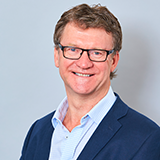
Dr Michael Rollo BECivil MBA PhD FIEAust FAICD has 40 years’ experience in the delivery of large-scale civil infrastructure projects. Mike was the Chief Risk Officer for Leighton Holdings/CIMIC Group from 2012 to 2017, during which time he oversaw the successful tendering and delivery of many of Australia’s largest infrastructure projects.
In 2020 he completed his PhD with a research focus on factors that enable mega infrastructure projects to be successful. Mike is an Honorary Professor at University College London. He lectures and consults globally to industry leaders on successful mega infrastructure delivery.
Engineering and the law: a penumbral eclipse?
The author posits that, as the law and regulation begin to invade even more and more of commerce, the actual impact of this will be likely to be unknown until it arrives. Keith will explore the post-pandemic trends of how new ways of working, new ways of building design, and the rise of the small to medium enterprise, have already had significant impacts on engineers and all participants in the building liability chain of responsibility, needing to constantly adapt to these new phenomena.
What are the legal and risk implications of it all? Will building design liability and that of general engineering liability be the same into the future? Or will a penumbral eclipse of sorts start enveloping the risk to the profession? Will the frog of engineering liability realise the temperature of the risk pot has risen in new and potent way? Or will old ways of thinking predominate and constrict the adaption to new and challenging surrounding legal liability and risk? The author explores these issues and some trends for engineering liability law risk into the future.
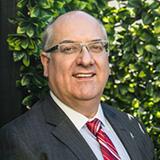
Keith Redenbach, a veteran in major infrastructure projects law, has excelled for more than 25 years. He led large teams as a senior partner in various infrastructure, projects and government law firms. His advisory extends to Australian and international clients, encompassing resources, mining, infrastructure, services and transport projects.
With a career focus on major infrastructure, he adeptly handles commercial law and litigation. Notably, Keith's expertise garnered industry recognition, culminating in his 2021 Lawyers Weekly Construction and Infrastructure Partner of the Year award.
Integrating the cost variance and expected monetary value in the report for construction project control
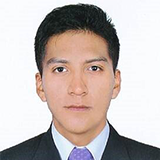
Erick is a cost engineer with a proven track record in project management, risk and cost control. With experience in executing projects and megaprojects, skilled in project control under AACE and PMI frameworks, he is certified as Project Management Professional.
In recent years he has been developing the implementation of the Power BI tool to improve the project control process.
The fallacy of contracting out all risk
In an increasingly tight economic environment, there has been a significant move toward contractual terms and conditions intended to transfer all risk downward through the project delivery chain. This trend has taken many forms, and often commences very early in the procurement process. This presentation will address some of the perceived causes of this market trend, and present reasons why the concept of “shedding all risk” is a fallacy that frequently leads to suboptimal project outcomes.
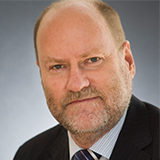
David offers specialist advisory support in the engineering and infrastructure sectors, particularly in the fields of project procurement, delivery strategy, dispute resolution, and project and program governance and management. His achievements and contribution to the profession of engineering have been recognised by Engineers Australia in his selection as Queensland Professional Engineer of the Year in 2011 and as an Honorary Fellow of Engineers Australia in 2013.
From 1982 till 2013, David worked in direct risk management and project management office leadership roles, both in the Australia and New Zealand regional operations of AECOM and subsequently as founding Chair of the Enterprise PMO for the global AECOM operations, which engaged 45,000 staff around the world. Since leaving AECOM he has practised as a project and program management consultant, providing strategic advice in the infrastructure sector and occasional expert witness services.
His education includes a BE(Hons) and PhD from University of Queensland, the Professional Certificate in Arbitration from University of South Australia, and the Company Director’s Diploma from the Australian Institute of Company Directors. He has been statutory Director on the board of four companies. He has published and presented widely on topics including risk, organisational project procurement, education and structural engineering.
Panel Q&A
Q&A for all concurrent 1 sessions.
Achieving national resilience requires different thinking
We often think about national resilience at times of crisis or conflict. However, the foundations for resilience are built with every decision we make before a crisis begins to unfold. Resilience is a nation’s ability not only to withstand expected disruptions but also to better position itself for an unknown disruption.
This era of concurrent, cascading and consecutive crises requires different thinking and approaches. While governments at all levels are focused on ‘resilience’, clarity on what is required at the grassroots level continues to elude. This places emphasis on reactively fixing a problem rather than creating an environment where the impact of crises—natural or otherwise—could be eliminated or significantly curtailed.
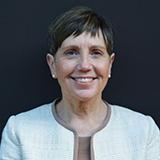
Gill is the Vice President – Global with the Australian Risk Policy Institute and a member of the ARPI Board. She has extensive senior executive experience in government policy, programs and transformation and has worked across a broad range of public policy areas including national security, regional development and environment. She led the Australian Government’s biometrics for border control program which included design and implementation of SmartGate in Australia and New Zealand, and redesign of air passenger analysis.
Through her company LeadAbility Group, Gill's current focus is on strategy, governance and risk. She is also a Senior Fellow with the Australian Strategic Policy Institute where she undertakes research and analysis related to modern nation building, resilience and security. Since 2020 she has authored numerous articles and special reports for ASPI including co-editing ASPI's Counterterrorism Yearbook 2022.
Gill is on the UTS Faculty of Arts and Social Sciences Industry Advisory Board, she is an Executive Fellow of the Australian and New Zealand School of Government and holds an MBA in International Business.
Quantitative risk analysis and project governance
This presentation will provide a short summary of the role of quantitative analysis of uncertainty in governance and decision making in large projects. It focuses on the interaction between quantitative analysis and tollgate decisions at the end of each project phase, including the contribution of quantitative analysis to the decision support package (DSP) used by an investment review committee. It notes the different contributions of distributional outputs, sensitivity outputs and input data about uncertainties to specific parts of the DSP. Finally, it notes that cost and schedule uncertainty may not be the most important factors if the main focus of decisions is on project value.
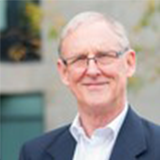
Dale Cooper has more than 40 years’ experience as a senior line manager and an international consultant in enterprise, strategic and project risk management.
He is a co-author of Project Risk Management Guidelines: Managing Risk with ISO 31000 and IEC 62198 and convenor of the international team preparing the third edition of IEC 62198, Managing risk in projects – Application guide.
He has been an independent chairman and member of several audit and risk committees.
He received his PhD in operational research from the University of Adelaide. He is a Fellow of the Australian Institute of Company Directors and the Financial Services Institute of Australasia, and a member of the Society of Petroleum Engineers and the Society for Risk Analysis.
Last line of defence from project optimism bias
Optimism bias remains the most common driver of planning fallacy in projects across the globe, preventing project professionals from accurately assessing risks and driving projects’ failure across multiple dimensions, including scope, schedule and cost and beyond.
Numerous decisions are made daily across projects and programs based on an ideal vision of the future events rather than on a rational weighing of realistic probabilities, causing projects to overstate benefits and underestimate costs.
Well established PMOs, through their portfolio management, risk management and assurance functions, can effectively function as a defence mechanism to mitigate the impacts of optimism at individual project level by applying portfolio lens.

Elena is a top performing leader and executive manager with extensive experience in managing large-scale portfolios and successfully delivering and governing programs and projects in banking, IT, civil construction, mining and HV electricity transmission. Her career as an award-winning project manager is further enhanced by holding senior roles in project controls and portfolio management across multibillion-dollar portfolios.
Elena has in-depth understanding of all aspects of project operations from pre-feasibility to in-delivery turnarounds as well as an ability to resolve complex problems while retaining a strategic viewpoint of business priorities to accelerate returns. Her experience in investment case development, financial and business planning and stakeholder engagement allows her to effectively govern delivery and bridge the gaps between the business vision and execution.
Complexities of major industrial incidents and the application of human rights in risk-based decision making

Shoena Messner’s career is in two halves. The first half, from 1993 to 2009, was as a process/production/chemical and risk engineer within the mining industry of Western Australia. This included involvement in all phases of a mega-project EXCEPT initial design, but unusually, including closure. A dust explosion and fatality catapulted Shoena into her second career as a regulator of major hazard facilities in Queensland.
She was involved in the assessment and licencing of three concurrent LNG megaprojects at Curtis Island, the evolution and revision of the hazard chemical facility development assessment criteria (State Code 21) to better reflect community standards, and most recently in adjusting existing safety frameworks to accommodate a nascent hydrogen industry.
Panel Q&A
Q&A for all concurrent 2 sessions.
Afternoon tea
Asset risk management: can top-down and bottom-up ever be like Barbie and Ken?
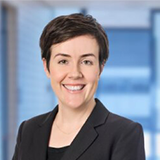
Laura is a risk and asset management specialist who works with businesses to bridge the gap between the strategic and the tactical. As a Chartered Engineer in Risk Engineering, Laura has significant experience working with asset-intensive organisations to manage uncertainty, understand risks to performance and realise opportunities for improvement.
Laura is part of KPMG’s Engineering, Assets and Project Delivery team, and works with clients on engagements involving risk management, organisational and investment decision making, asset management and business improvement. Laura has worked with asset-intensive clients across a range of sectors, including health and social infrastructure, water, energy and resources and transport.
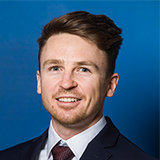
Gavin Treseder has a strong background in reliability engineering and asset resilience. Normally you'll find him developing bespoke, predictive models and implementing asset management strategies for ageing equipment fleets across asset intensive industries. More recently, he's been embedded with power clients helping them prepare for the energy transition with robust, defensible investments for an uncertain future.
Risk engineering and engineering innovation enabling the digital transformation
Promoting collaboration between teams to develop a more efficient, software led, risk understood engineering process that delivers experience excellence through customer first designed and delivered features is Suzanne’s life in 2023.
Suzanne is a Strategic Engineering leader at Ford Motor Company, she has been with the company for 20 years. Suzanne lived the hardware manufacturing life for more than half her career and has now transitioned, along with the majority of her colleagues into the world of data dashboards, modem enabled vehicles, over the air software updates and data enabled engineering efficiency.
Vehicle complexity that has been handled for many years in the hardware world by working to reduce the amount of physical parts delivered to the production line has now become about software complexity; it’s invisible nature is a new challenge the automotive world is beginning to understand.
Join Suzanne to hear about how the Automotive world is transforming to a digital space and the key to the transformation is breaking down the barriers between teams. Suzanne is promoting a psychologically safe environment where vulnerability is rewarded and celebrated, communication is enhanced and prioritised.
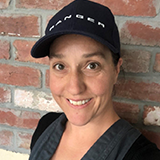
As the Features Software Integration Manager (FSIM) at Ford Motor Company and a start-up entrepreneur, every day brings the need for risk analysis and innovative thought. Suzanne graduated university with an engineering degree 20 years ago and since then has worked in a range of incredible product development and operational roles at Ford Motor Company.
Suzanne is not only a proud engineer – she is a whole lot of other things: an athlete, a leader, an influencer and a mum of two who cares about our future.
Suzanne completed her owner builder qualifications and built the family’s sustainable passive home in 2019 and went on to launch Her Creation Squad in 2021, an online school teaching women to sustainably create. This year, HCS is getting even bigger, partnering with one of our biggest universities to create a circular economy interface to enable the diversion of building waste to creative projects rather than landfill.
Digital innovation automates water asset, cultural and environmental risk analysis
In the presentation, we will share case studies that demonstrate the effectiveness of the digital platform in improving business operations, as well as the challenges we overcame in implementing this change.
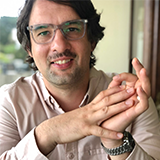
John Paul Hunter is a Data Scientist at South East Water, bringing more than two decades of expertise in software engineering and data analytics. He holds qualifications including MMm(CompEng), ProfCertWebAppDev (Swinburne) and NanoDeg(AIProgPython) from RMIT. In his role within the Reliability Team, he guides data science and analytics workflows, skilfully blending technical finesse with a strategic mindset to consistently drive innovative advancements in process optimisation.
With a strong commitment to excellence, John Paul Hunter continues to play a pivotal role in enhancing the field of data science and its applications in real-world contexts.

Priscilla Chung is a non-executive director, and an experienced people leader with more than 20 years' of professional engineering, and commercial background in private and government sectors internationally.
Priscilla is currently the group manager for asset reliability planning and delivery at South East Water. In last couple of years, she has sponsored a program to transform the organisation’s capability in asset management. The program developed and implemented systems and processes that embed a risk-based framework with a strong focus on leveraging digital platforms, latest technology and data science.
Sustainable project governance
Join Laurie Bowman in an exploration of the pivotal role risk management plays in mitigating global warming and achieving net-zero emission targets. In this session, we'll delve into a dynamic governance framework that seamlessly combines sustainability, psychology, and risk decision-making principles.
Engineers will gain valuable insights into incorporating sustainable practices into their projects, bolstered by effective risk management strategies. Discover how this comprehensive approach, grounded in systems thinking, can not only ensure compliance with emerging reporting requirements but also revolutionise project outcomes.
Laurie's presentation promises to equip you with actionable takeaways, enabling you to navigate the evolving landscape while maximising strategic advantage.
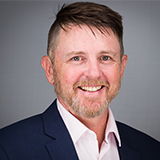
Laurie Bowman is a passionate advocate for sustainable project governance and effective risk management. With a wealth of experience in helping organisations navigate complex projects, Laurie's expertise lies in helping engineers drive positive change taking advantage of technology advancements amidst the complex landscape of climate change, climate reporting and sustainability disclosures.
Laurie's focus is on aiding organisations in their transition towards sustainability, achieving compliance with emerging mandatory requirements and leveraging these changes to enhance project performance and achieve strategic advantage.
Panel Q&A
Q&A for all concurrent 2 sessions.

Geoff Hurst is an experienced and strategic thinking mechanical engineer providing advice and expertise working with a range of senior executives both internal and external to an organisation. He has worked in large organisations including semi government, construction, heavy industrial, education and other service environments.
Through the collection and review of data and information, he designs and facilitates the development and implementation of risk engineering solutions OS Systems workshops that are needs specific and shape best practice in the relevant sector.
With honed leadership and communication skills he fosters collaborative working relationships at all levels and as a respected team leader and network partner, Geoff is regularly invited to participate in working parties and as a conference presenter.
What makes an engineer a risk engineer?
It is about forty years since the notion of risk engineering was introduced in Australia with the formation of the Risk Engineering Society of the then Institution of Engineers, Australia. A few years later an engineer, in a letter to the editor, asked what exactly was it that risk engineers did or offered?
This presentation reviews the origins of engineers’ interest in risk as the basis of a modern scientific, educational and practice-oriented consideration of the question.

Derek is a risk engineer with forty years of practice in many industries and four countries. He designed post-graduate risk courses in two universities, is the author of five books, a number of handbooks and numerous papers. His most recent book, Occupational Risk Control was published by Gower (now Routledge) in 2015. His text Accident Analysis and Risk Control remained in use over a decade after the last print edition.
His work as an expert witness included evidence in a case in which the admissibility of the evidence was tested and accepted at the High Court of Australia.
Risk, resilience and the risk engineering body of knowledge
The related concepts of risk and resilience are aspects of the risk engineering body of knowledge that require further discussion. This presentation contributes to the discussion and goes some way to contextualise these concepts so that they can be presented as part of the risk engineering body of knowledge. What is “risk”, what is “resilience” and how do they relate to problem solving and other terms used in the profession?

Geoff Hurst is an experienced and strategic thinking mechanical engineer providing advice and expertise working with a range of senior executives both internal and external to an organisation. He has worked in large organisations including semi government, construction, heavy industrial, education and other service environments.
Through the collection and review of data and information, he designs and facilitates the development and implementation of risk engineering solutions OS Systems workshops that are needs specific and shape best practice in the relevant sector.
With honed leadership and communication skills he fosters collaborative working relationships at all levels and as a respected team leader and network partner, Geoff is regularly invited to participate in working parties and as a conference presenter.
Risk and opportunity management of “wicked” HSEQ issues and problems
Often in assessing and managing the risks of HSEQ issues and problems, more and more are being identified as not simple and obvious, but rather complex and highly complicated. Many are becoming more difficult to assess and control, enough to call them “wicked”. This presentation explains the nature of HSEQ systems that can be classified as complex, complicated and “wicked”.
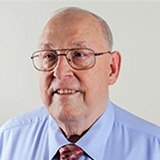
Jim is an Honorary Life Member of the Risk Engineering Society having been a member for more than 25 years, including as QLD Chapter Chair as well as National President.
He is a consultant, trainer and author covering risk and opportunity systems and engineering, and causal and risk analysis. These services have covered major incidents and risks in OH&S, quality, environment, assets, equipment and process failures in all industries. He has provided formal R&O training which has extended to more than 105 courses and risk workshops with more than 2500 participants.
He has been a risk engineering expert witness in upward of 300 legal cases.
Situated reasoning for next generation risk modelling
Rapid technological advancements, globalisation and the increasing complexity and uncertainty of today's society have outpaced traditional risk modelling techniques. This presentation will introduce work underway to develop advanced risk modelling capability built on situated reasoning methods and technology.
The approach seeks to combine category theoretic two-sorted reasoning with the Causal Network Topology Analysis framework to model risk and control in open world systems. An example involving a reversing truck in two different contexts will be used to explain the application of situated reasoning to risk modelling.
The goal is to build possibilistic modelling capability that can accommodate the influence of unknowns and evaluate the influence of controls over potential futures in complex open world scenarios.
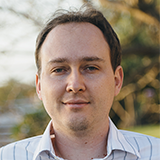
Dr Mathew Hancock is currently Mirvac’s Group HSE Manager, Performance Insights and Governance, an Adjunct Professor with the Minerals Industry Safety and Health Centre at the University of Queensland and Lead Risk Engineer with Sirius-Beta.
He has extensive experience in enterprise risk management through his 12-year tenure with Rio Tinto and for the last three years has been driving transformation of the Downer Group’s health, safety and environmental risk management program.
Dr Hancock is passionate about advancing the state of the art in risk management and artificial intelligence, with specific interest in the application of situated reasoning to management of risk under complex and uncertain conditions.
Panel Q&A
Q&A for all concurrent 3 sessions.
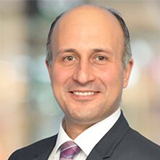
Afternoon tea
How do we manage the nuclear risks from a power reactor?
Nuclear power is a reliable, low emissions source of electricity supply in many countries, but not yet in Australia. How do we manage the nuclear risks from a power reactor? How is deterministic and probabilistic analysis used and how is the concept of “Defence in Depth” applied.
Post Fukushima, the safety of all reactors has been re-examined to ensure safety in extreme situations. What are the international safety standards for protecting people and the environment from the harmful effects of ionising radiation? Are the latest designs of Small Modular Reactors (SMRs) suitable for Australian conditions?

Tony Irwin is a Chartered Engineer, Technical Director of SMR Nuclear Technology Pty Ltd and Chair of Engineers Australia Sydney Nuclear Engineering Panel.
Tony worked for British Energy in the UK for more than 30 years, commissioning and operating eight nuclear power reactors. In 1999 he moved to Australia and joined ANSTO where he was the Commissioning and first Reactor Manager of ANSTO’s new OPAL research reactor.
Tony is now a consultant, Honorary Associate Professor and principal lecturer for Nuclear Reactors and the Nuclear Fuel Cycle at the ANU.
Higher order project development and delivery risks in the pumped hydro energy sector
Australia is undergoing a dramatic energy transition – driven in part by emission reduction and net zero emissions targets. While a key part of the transition requires more renewable energy generation (mainly solar and wind), these cannot be reliably delivered to consumers without significant development of long-term energy storage and network ancillary services (inertia).
Pumped hydropower represents an opportunity to create the storage and inertia to enable the renewable transition – but also involves significant risks in development and delivery that have seen only two major projects commence construction to date.
This presentation explores the nature of those risks (regulatory, environmental, engineering, and commercial) and some of the measures being used to mitigate them. From the lessons learned so far, the paper suggests a series of actions by all stakeholders that may ease the path for future developments
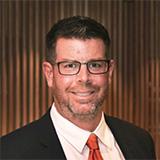
Bob is a Market Director within SMEC’s ANZ Infrastructure business unit. He has 30 years’ experience as a general manager, project director/manager, technical director and environmental scientist including project governance, feasibility studies, project approvals, impact assessment, monitoring and environmental planning/management. He has strengths in the leadership of multi-disciplinary feasibility studies, EISs and owner’s engineering teams for hydropower, dams, port and pipeline projects.
Bob is currently the Owner’s Engineer Project Director for Snowy 2.0 and the Queensland Hydro pumped hydropower projects.
Bob leads SMEC’s global Water and Environment Strategy, is a member of the SMEC ANZ Executive Committee and a company secretary of SMEC Australia, and a graduate of the Australian Institute of Company Directors.
Practical and efficient project controls for major transmission line projects: case study HumeLink Transmission Line
HumeLink is a new 500kV transmission line which will connect Wagga Wagga, Bannaby and Maragle. It is one of NSW’s largest energy infrastructure projects, with about 360 km of proposed new transmission lines, and new or upgraded infrastructure at three locations.
HumeLink will provide a crucial hub for the flow of electricity in the National Electricity Market (NEM). The project will enable high volume energy transfer around the NEM improving access to affordable electricity.
As the HumeLink’s Project Controls Manager, Mayur will share his experience in practical processes and procedures being used by his team at HumeLink to develop and implement an optimum project controls function including cost estimation, scheduling, risk (qualitative and quantitative), contingency determination, change control and document management.

Mayur Kulkarni is a project management professional with more than 17 years experience specialising in large electrical infrastructure project delivery. Mayur has extensive experience in coordinating large teams with proven track record in the construction and commissioning of major substations, overhead transmission lines and underground cables, as well as secondary systems.
Mayur is presently leading the integrated project controls team on the iconic $4.9 billion dollar HumeLink project at Transgrid, that has particular focus on risk, cost, program, governance, assurance and document control.
Asset resilience: “Trust me, I’m an engineer” doesn’t cut it anymore
In an interconnected world facing black swan events at an alarming rate the concept of resilience has taken on new significance. The traditional adage of "Trust me, I'm an engineer" falls short in addressing the multifaceted challenges faced by asset intensive organisations. Assets have become increasingly complex and networked with their impact felt widely across the community. This presentation will delve into the evolving landscape of asset resilience, highlighting the limitations of relying solely on engineering expertise and proposing a more holistic approach.

Gavin Treseder has a strong background in reliability engineering and asset resilience. Normally you'll find him developing bespoke, predictive models and implementing asset management strategies for ageing equipment fleets across asset intensive industries. More recently, he's been embedded with power clients helping them prepare for the energy transition with robust, defensible investments for an uncertain future.
Panel Q&A
Q&A for all concurrent 3 sessions.

Jim is an Honorary Life Member of the Risk Engineering Society having been a member for more than 25 years, including as QLD Chapter Chair as well as National President.
He is a consultant, trainer and author covering risk and opportunity systems and engineering, and causal and risk analysis. These services have covered major incidents and risks in OH&S, quality, environment, assets, equipment and process failures in all industries. He has provided formal R&O training which has extended to more than 105 courses and risk workshops with more than 2500 participants.
He has been a risk engineering expert witness in upward of 300 legal cases.
Networking reception
Conference dinner
Day two
Welcome

Day one summary
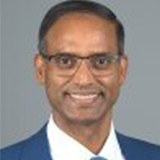
Strategic Risk Policy®: a new approach to risk to succeed in today’s world
New thinking about risk is essential for today’s transformative, disruptive, interconnected and interdependent world. We need to think about risk in terms of vulnerabilities that are concerned with consequences. Underpinning this is a change to the leadership paradigm from organisation-centric to network-centric thinking given that modern day information resides in networks. The Australian Risk Policy Institute is exploring new risk thinking and has developed a contemporary approach to strategic risk policy.
This presentation will provide an overview of ARPI’s Strategic Risk Policy® – Risk 4.0 and describe how it can enable informed, pre-emptive decision-making to identify potential impacts before they arise.

Gill is the Vice President – Global with the Australian Risk Policy Institute and a member of the ARPI Board. She has extensive senior executive experience in government policy, programs and transformation and has worked across a broad range of public policy areas including national security, regional development and environment. She led the Australian Government’s biometrics for border control program which included design and implementation of SmartGate in Australia and New Zealand, and redesign of air passenger analysis.
Through her company LeadAbility Group, Gill's current focus is on strategy, governance and risk. She is also a Senior Fellow with the Australian Strategic Policy Institute where she undertakes research and analysis related to modern nation building, resilience and security. Since 2020 she has authored numerous articles and special reports for ASPI including co-editing ASPI's Counterterrorism Yearbook 2022.
Gill is on the UTS Faculty of Arts and Social Sciences Industry Advisory Board, she is an Executive Fellow of the Australian and New Zealand School of Government and holds an MBA in International Business.
The changing liability landscape in construction projects globally
Kourosh will discuss the trends in causation of claims and disputes based on the insights gained from the construction matters we work on globally. He will highlight risks associated with contract, method of project delivery, capability and quality, technology and innovation, and outline corresponding risk avoidance strategies.

Dr Kourosh Kayvani has more than 30 years’ experience as a practicing engineering and executive leader.
Kourosh is a Board Director of Engineers Australia, an Adjunct Professor at Western Sydney University and a Senate member of the FIDIC Academy. He has played leading roles in the design and delivery of many complex projects globally, including Wembley Stadium in London, West Kowloon Terminus in Hong Kong, and 5 Martin Place redevelopment in Sydney. He has acted as expert witness on construction disputes in Australia, New Zealand, the UK and the Middle East.
Kourosh was the recipient of John Connell Gold Medal from Structural College of Engineers Australia in 2019.
Climate risk and engineering: do we really get it?
There are ten megarisks to humanity cited by the Council for Human Future. An important one is mass delusion – the inability of people to understand the deadly threats that now confront us all is the greatest barrier to global action for a safe human future. Disinformation, lies and false beliefs pose an existential risk to our survival.
Lara Harland and Steve Posselt have spent five years developing an elearning awareness course for all engineers, allowing engineers to understand the threats and to counter the disinformation. Lara and Steve will describe the course in relation to the Climate Risk section, the processes and the reasons for its structure. They will give examples of where the legal profession is way ahead of the engineering profession in understanding the risks, leaving engineers very much exposed.
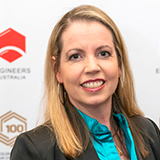
Lara was Chair of the SENG National Board from October 2011 to October 2013 and is the immediate past Chair of the Environmental College. As Chair of the Environmental College, she was instrumental in the development of the latest Engineers Australia Climate Change Position Statement.
She is committed to sustainability and strongly believes that we are all responsible for solving the problems of today’s society. She is currently working part time so she can develop an online sustainability training package with Steve Posselt.
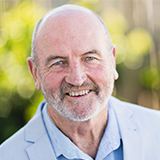
Steve Posselt, a retired manufacturing business owner and accomplished civil engineer, stands as an adventurer, author, farmer and dedicated climate warrior.
Morning tea
Presilience, leadership and high performance
In this session you'll learn:
- Why presilience is the key skill set required to thrive in the new normal.
- Why leadership starts with an internal narrative.
- An understanding of the whole of person model in practice.
- Why understanding how we make decisions is crucial to high performance.
- The journey from compliance to resilience.
- Why agility and resilience are crucial for success.
- How to build a mindset for presilience
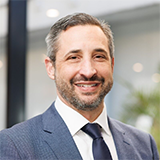
Dr Gav is an acknowledged business leader and specialist in the field of human based risk management and the psychology of risk. He is the CEO of the Risk 2 Solution Group – Australia's most awarded integrated risk management business. He is the creator of the Presilience® approach, recognised in the prestigious AFR Most Innovative Awards in 2021.
He is a serial entrepreneur and has been running his own businesses since 2001. He has conducted business in more than 17 countries and provided a wide range of services for a very diverse client base, ranging from heads of state, to school teachers. He is a leading academic and subject matter expert in his field and is a much-sought after international speaker.
In addition to being the RMIA’s Risk Leader of the year in 2023, Risk Consultant of the Year in 2019, Dr Gav is the only Australian to make the IFSEC Global influencers top 20 thought leaders list for the last four years in a row and is a finalist in the CEO Magazine – CEO of the Year Award for 2023. Dr Gav also holds an 8th degree black belt in Krav Maga and Jujitsu and has been training for more than 40 years.
The role of PMO and project risk management in delivering energy projects successfully by asset owners
A significant investment will flood into capital projects over the next decade, but few long-standing operational organisations today could plan and deliver these major projects with the speed and operational efficiency the influx requires. A project-centric approach also may not work for decarbonising existing assets, which is a capital-intensive effort that requires long-term planning. These bring many unique challenges and opportunities to these organisations. The entire structure and culture of these organisations is based around a low-risk exposure within the operational context where the primary driver is to keep the assets running reliably and efficiently.
Organisational processes are generally deliberately risk averse, slow to adapt and built specifically to discourage change. In this environment, we are bringing massive change by not only introducing significant new assets and technologies, but also changing the organisation over a short period of time by using a delivery method which is fundamentally different to many existing practices and operational culture of the parent organisation. A better risk-driven approach is a portfolio-synergistic strategy in which planning is top-down across the portfolio, with the key objective being to develop and deliver each project so that the overall results of the capital projects portfolio are optimised.
Implementing this new portfolio capital projects management would be a major business challenge, requiring proactive stakeholder identification and management, markets expertise, and an understanding of complex approval processes, as well as the ability to source the necessary talent, proactively manage supply chain constraints, implement an Integrated Project Controls across portfolio, and obviously measure and communicate progress accurately against target objectives and goals.
The successful planning and delivery of these large capital projects requires risks and opportunities to be managed in the context of a project delivery framework rather than the existing operations framework.
The risks associated with these projects is further complicated by drivers such as “first to market”, integration of new energy generation assets based on different technologies to what the organisation is familiar with (think batteries, solar, wind, hydrogen and pumped hydro to name a few), and the opportunity presented by moving into the digital engineering space of the 2020s rather than the late 1900s.
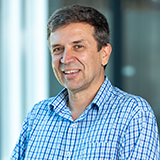
Wes is an experienced professional manager focused on delivering solutions and value. He has a background in project delivery via PMC, EPCM and alliance delivery models; operational management; and public service that spans more than 30 years.
As Program Director and Deputy Project Director on complex multi-million-dollar infrastructure projects he has played an instrumental role in the development of some of Australia’s largest infrastructure and mining projects.
Wes uses a collaborative management approach to empower his team to innovate, manage risks and capitalise on opportunities while maintaining a clear focus on delivering solutions rather than simply identifying problems.
As Head of Future Energy Projects Wes is responsible for delivering CS Energy’s Future Energy Capital Project portfolio.
Building intelligent risk-taking cultures
The best tools in the world are useless or even dangerous if you operate them incorrectly. I learned this lesson as a nuclear submariner. Operating in one of the most physically and mentally challenging environments on the planet, the mission of a submarine is to detect whilst remaining undetected. Every day brings new challenges and uncertainties. The stakes are high – decisions are a matter of life or death every day – and yet decisions are taken with serenity and intelligence.
During my subsequent twenty-year risk management career in the defence industry, I have pursued a professional mission to support organisations to develop an intelligent risk-taking culture like the one I saw in action on the submarine. The risk practitioner and their organisation are at their best when a culture exists that promotes strong leadership, honest communications and a thorough understanding of the risks and impacts at play.
This presentation will chart my experiences implementing my mission and provide all attendees with new ideas to help them achieve their own risk-based cultural change.

Mark, with more than 30 years in defence and aerospace, has held roles such as Royal Naval engineer, VP of Risk Management and Head of Internal Audit. He founded Emsity Ltd in 2018, providing global risk management solutions. He's a Certified Fellow of the Institute of Risk Management (IRM), authored works on technology and risk management, and is a Non-Executive Director there.
Emsity is currently the lead consultant for the Safran Risk Manager software product
Effective and efficient project controls function for tier 1 contractors
A recent ACA report stated that, “More than half of all large builders are now carrying current liabilities in excess of current assets—a technical definition of insolvency.”
Among other practical mechanisms and solutions, how could project controls play a fundamental role in helping mitigate and solve this challenge effectively?
In this presentation, I will share my experience and lessons learnt in setting up projects to help provide certainty of delivery. I'll go through the purpose of project controls, the fundamental principles to set up an effective project controls system, and the prerequisites for it to be successful, all in terms of people, processes and tools. I'll also touch on risk management for mega projects.

Mr Elshobokshi is a civil engineer and project control professional with more than 35 years in construction, performing various roles with private organisations on projects in Australia, the UAE and Egypt.
Mr Elshobokshi held and led critical roles on major and mega projects and programmes in the building, defence, resources, infrastructure, and rail sectors. He has a well-blended leadership, people management and professional experience leading various planning, project controls and project management roles. Mr Elshobokshi has complemented this with a solid focus and strategic approach to digital transformation, integrated time, cost, change and risk management and real-time reporting.
Mr Elshobokshi is MRICS chartered by The Royal Institution of Chartered Surveyors.
Panel Q&A
Q&A for all concurrent 1 sessions.

Lunch
Managing the element of surprise through integrated risk management
With project decision makers seeking early warnings and seamless processes for monitoring risks and their mitigations, project risk specialists have to consider the full risk cycle where risk forms part of integrated project controls. Insights on risk with potential impacts to project schedule and cost forecasts rely on strong processes and collaboration between risk managers, cost managers and planning managers.
This session will explore the role of risk practitioners in ensuring active risk management through:
- Material risks being captured in contingency calculations and drawdowns.
- Focus on qualitative and quantitative risk analysis, control assurance, action escalation.
- Effective integrated risk reporting based on agreed and appropriate triggers and metrics linked to risk appetite and risk tolerance.

Highly-experienced risk, change and project management professional with background in infrastructure, energy and financial services industries. Adaptable and able to quickly develop a deep understanding of new areas. Strong track record in fit-for-purpose, strategy-focused delivery.
Recognised by peers for leadership and insights, both internally and externally. Known for effectively balancing outcomes with stakeholder expectations and team wellbeing.
Brisbane Metro: Managing the transition to operational readiness
This presentation will provide an overview of the delivery of Brisbane Metro, as well as preparations underway to ensure operational readiness at project completion in late 2024. Brisbane Metro is a program comprising the delivery of five integrated components:
- upgraded busway infrastructure and a Metro Depot
- a fleet of 60 high-capacity battery electric Metros, the first of their kind in the Southern Hemisphere
- introduction of a new bus network for Brisbane
- policy and operational changes
- an operating system.
Operational readiness requires the Brisbane Metro project team to work closely with the operator, Transport for Brisbane, to ensure that assets, operations, and customers are all ready for the introduction of this major transport service change.
Aspects covered by the presentation will include: Brisbane Metro description, including objectives and benefits, the major program components and their inherent complexity and interdependency. Key elements of operational readiness, and how the transition from project delivery to commencement of passenger services is being achieved. Managing project delivery and operational readiness risks in a coordinated manner.
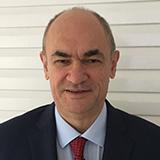
David has been a Brisbane City Council executive for almost two decades and is currently a member of the Major Projects Leadership Team. His extensive professional experience includes leading multidisciplinary teams, procurement, project management, asset management, strategic planning, and risk management. Prior to working at Council, David spent more than a decade in engineering services, where he was involved in the design, delivery and management of infrastructure, industrial and property assets.
As well as working throughout the eastern states of mainland Australia, David has completed projects on the Indian Subcontinent, South East Asia and the Pacific Islands. David has a Bachelor of Engineering (Mechanical) (Honours) and a Master of Engineering Science (Engineering Management), both from QUT. He is a Registered Professional Engineer in Queensland, and a Chartered Fellow with Engineers Australia in the areas of Mechanical Engineering, Risk Engineering and Leadership and Management. David is the Deputy President of the Risk Engineering Society.
Project governance – delivering projects fit for purpose, on time and to budget

Gaye Francis is a Director of R2A Due Diligence Engineers. For more than 30 years, R2A has been promoting the use and value of their project governance approach which has always been based on the common law duty of care as understood from an expert witness perspective. Gaye has been involved with applying this process to projects ranging in value from $10 million to $3.5 billion, including EastLink, Marina Coastal Expressway in Singapore and the procurement of E Class trams in Melbourne. None have gone over time or budget and have always met key stakeholder expectations.
Utilisation of 4D program in effective project control and risk mitigation
The advancement of 3D BIM Model Elements and with the availability of CPM Schedules, when integrated together to generate a 4D Programme, allows to develop digital twin. Under simulation of various construction sequences and approach in 4D Program we are exposed to the scenarios, unknown constraints, and risks, which will help us in optimising construction strategies and resources deployment.
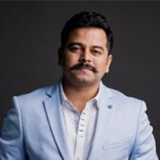
Sandeep is working as Planning Manager at Penta Ocean Construction Company, Singapore for infrastructure projects. He has been working in project controls industry for about 13 years post completion of Master’s degree from IIT Roorkee India and also holds an MBA.
He is an expert in 4D project controls and manages the team of planners and BIM professionals in his busy work. He is also expert in delay analysis and advises strategies in developing the claim reports and provide appropriate delay analysis to the case.
He is also Digital Course Instructor in Project Controls at Udemy Platform with more than 60,000 students accessing his courses, which alleviates his digital presence and now actively developing YouTube to reach out wider audiences and learners. He has worked in India, Malaysia, and Singapore.
Improved QSRA using the risk driver method
This presentation provides an overview of using the Risk Driver method for QSRA by comparing the similarities and differences over the traditional approach. For new or experienced QSRA practitioners this presentation will provide guidance on adopting and using this method with practical examples to demonstrate the benefits offered by the Risk Driver method for informed risk-based decision making.
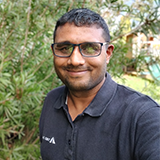
Santosh Bhat has been planning and scheduling for more than two decades in the Australasian region, across a diverse range of project and corporate planning and controls roles, including governance, assurance, systems and knowledge management, for major construction contractors, clients and consultants.
Santosh is an independent Sydney based consultant and Co-Founder of Turbo-Chart.
Panel Q&A
Q&A for all concurrent 1 sessions.

Understanding risk work in an increasingly AI enabled world
Increasingly AI is being used across society for a variety of reasons ranging from security, marketing, decision support, advanced data analytics, interpretation of images, speech and other biometrics information, logistics, entertainment and many other applications.
AI can be used in risk work to help identify, analyse and evaluate risks both in terms of threats and opportunities as well as the efficacy of different risk treatment options. However using AI can introduce both known and emergent risks. AI is rapidly be deliberately deployed and infiltrating business as our personal lives.
Through case study examples this presentation will highlight some of the considerations that risk professionals might want to take into account when performing risk work in this increasingly AI enabled world.

Professor Maureen Hassall is Director and Professorial Research Fellow of UQ’s Minerals Industry Safety and Health Centre and director of UQ R!SK at The University of Queensland. She has more than 30 years’ experience working in industry and in academia developing and leading innovative transformational change projects in the areas of risk management, human factors, systems and process safety engineering and organisational development.
She is passionate about delivering evidence-based research and education solutions that deliver significant and sustainable improvements to the health, safety and wellbeing of workers, work processes and workplaces.
Include past project performance in your QRAs or be overtaken by AI soon!
This presentation highlights the risks of continued use of MCS methods based on expert opinion only and points to the value of including past project performance using parametric modelling of Systemic risk. It suggests the adoption of AACE RP 117R-213 to restore credibility to CPM-based ICSRAs and SRAs by producing P+IRAs and P+SRAs.
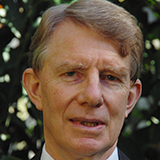
Colin Cropley has more than forty years’ experience of project management, project controls and risk management. He has experience in project and risk management consulting, software development and training in many sectors and for many major companies and organisations.
Colin, a chemical engineering graduate of the University of Melbourne, was chairman of the Victorian Primavera Users Group 1997 to 2009, guest-lectured in project management at universities between 1991 and 2018 and has delivered presentations at many project management related conferences.
He wrote AACE® International Recommended Practice 117R-21 published August 2022 on ICSRA using a combined Parametric and Monte Carlo Simulation model.
Realising waste reduction opportunities using data to understand community wants and needs: a design thinking approach
Design thinking – a different way of problem solving. It’s a mindset, a creative problem-solving approach that helps us develop holistic human-centered outcomes. Suzanne will talk through a real-life design thinking example where her small business, Her Creation Squad (HCS) has implemented a Design Thinking approach to tackle climate risk at a community level; one small bite at a time.
“Environmentalism is used as a general term to refer to concern for the environment and particularly actions or advocacy to limit negative human impacts on the environment.”1
Environmentalism is a term which outlines people desire to work towards a greener planet, ironically the term is often divisive and paralysing for the general population. HCS has found that their audience often feels they don’t have the expertise to get involved in the conversation or solution to climate change, they find themselves turning a blind eye and failing to act. HCS is opening up the communication channels, empowering women to make small changes in many aspects of their lives, and to create a more sustainable future for their children and grandchildren. No question is a silly question and no change is too small.
The Design Thinking 5 step approach has guided HCS on a journey beginning with an owner builder passive house design and build, then onto DIY sustainable creation tutorials, leading the “Binfluencer” campaign and now onto software development and app design. Join Suzanne to hear a quick download of this rollercoaster ride of opportunity in small business, delivering climate risk solutions through prototyping and pivots.

As the Features Software Integration Manager (FSIM) at Ford Motor Company and a start-up entrepreneur, every day brings the need for risk analysis and innovative thought. Suzanne graduated university with an engineering degree 20 years ago and since then has worked in a range of incredible product development and operational roles at Ford Motor Company.
Suzanne is not only a proud engineer – she is a whole lot of other things: an athlete, a leader, an influencer and a mum of two who cares about our future.
Suzanne completed her owner builder qualifications and built the family’s sustainable passive home in 2019 and went on to launch Her Creation Squad in 2021, an online school teaching women to sustainably create. This year, HCS is getting even bigger, partnering with one of our biggest universities to create a circular economy interface to enable the diversion of building waste to creative projects rather than landfill.
The risky business of leading innovation
An engineer’s eyes are honed to reveal an innovation’s technical risks. However, as they move from the frontline to leadership roles, their understanding of risk needs to broaden to encompass the strategic. I do not simply mean narrowly defined commercial risks. But risks to the overarching strategic success of an innovation and the organisation driving it.
I’ll draw on my research into how engineering leaders manage innovation to identify key strategic risks that you need to be aware of and illustrate how organisations like HS2 and Xerox have gone about this over the years.
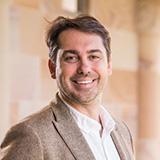
Dr Samuel MacAulay is a world-renowned expert on innovation strategy and Senior Lecturer at the University of Queensland’s Business School.
Sam’s research explores how innovation is shaped by business models, how new products and services are created, and how organisation gain and sustain competitive advantage. This research has focused on industries ranging from semiconductors to infrastructure and is published across leading international journals such as Academy of Management Review and MIT Sloan Management Review. Organisations around the world use this knowledge to inform the management of innovation in settings ranging from delivering complex infrastructure projects through to product development.
Panel Q&A
Q&A for all concurrent 2 sessions.

Astrid is a public sector engineer, mentor and risk and strategy professional who is excited by the potential to solve complex public policy challenges using systems thinking. She has practiced across defence, infrastructure, maritime and emergency management, and is currently practicing regulatory strategy in circular economy.
Astrid is the Immediate Past President of Engineers Australia’s Victoria Division and a member of National Congress. She chaired Engineers Australia’s Roundtable on Sustainability and Resilience of Infrastructure.
Originally trained in mechatronics engineering, Astrid holds an MBA from Melbourne Business School and attended decision analysis courses at Stanford. She is a Fellow of Engineers Australia and Chartered Professional Engineer.

Geoff Hurst is an experienced and strategic thinking mechanical engineer providing advice and expertise working with a range of senior executives both internal and external to an organisation. He has worked in large organisations including semi government, construction, heavy industrial, education and other service environments.
Through the collection and review of data and information, he designs and facilitates the development and implementation of risk engineering solutions OS Systems workshops that are needs specific and shape best practice in the relevant sector.
With honed leadership and communication skills he fosters collaborative working relationships at all levels and as a respected team leader and network partner, Geoff is regularly invited to participate in working parties and as a conference presenter.
Lunch
Project governance system failure, a critical risk in project and program delivery
This presentation addresses key findings and proposes solutions to manage risk of project governance failure in major projects.
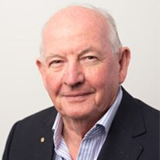
After qualifying in Computer Science and Civil Engineering, Ted started his career as a Main Roads, Works Engineer for 200 staff and roads, bridges and ferries. From these beginnings he went onto bigger projects including tunnels and freeways. In 1980 he shifted to project management on health, transport, nuclear fusion and fission, oil and gas, highrise, industrial, land and power.
He founded consulting companies in the UK, and Australia, including TSA Management in 1990, which now has more than 500 staff.
He was retained as Adjunct Professor and Adjunct Associate Professor, lecturing in Project Management. He is the author of several papers on risk management and complexity on projects he specialises in economic analysis and project governance and gateway reviews.
Extraordinary security threats: anticipating the unexpected
This talk elaborates on the role of threat assessment in security risk engineering and discusses the concept of an extraordinary security threat – those threats behaving in an unexpected manner, not adequately countered by standard security baselines or best practice. The goal of this talk is to propose an accessible modelling scheme to aid in early identification of such threats and the vulnerabilities they may exploit.

Evan is responsible for ensuring products are secure by design and security risks are identified, assessed and managed early and throughout the lifecycle. With engineering experience covering all five domains of defence, Evan has worked on projects ranging from small wearable systems to major naval platforms.
He is passionate about inspiring the next generation to pursue a career in engineering, having volunteered many hours and reached thousands of students over the years through STEM outreach activities.
The three legged stool: safety and resilience
How do we incorporate lessons learnt, training, stakeholder engagement, performance monitoring and improvements across industries and domains to make safety management systems more resilient?

Leanne is a risk management specialist with more than 35 years of experience in practical application of occupational health and safety (OHS) management systems as a safety manager, regulator and consultant across industries ranging from heavy manufacturing, IT industry, transport, security and aged care. She is experienced in the application of tools and systems to support OHS objectives, as well as project management and business skills.
Since 2008 she has been involved in the OHS academic program at UOW, lecturing in OHS Risk Management and Systems with a focus on practical applications.
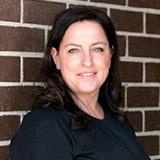
Jennifer, a leading assurance specialist and Co-Chair of the Risk Engineering Society (Victorian Division), has more than 25 years in systems and safety engineering, on complex projects in rail, defence – maritime, land and aviation, including M1A1 Abrams, medium/heavy recovery vehicles, ANZAC Class Vessel, offshore patrol vessel (Aus and NZ), seaboats, Canterbury Multi-Role Vessel (NZ) and recently in air traffic management and airspace change.
Jennifer presents the engineering profession through volunteering on the CSIRO/STEM program, introducing the next generation to engineering and in the last 12 months has mentored four women in the industry, in various stages of their career.
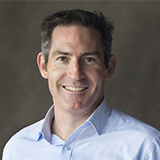
Justin is a project professional and strategic business leader with extensive experience across the transportation, defence, construction and healthcare sectors. His most recent role is as the Onesky PMO Manager for Airservices Australia and prior to that as the Head of Program Safety.
In this role Justin and his amazing team were responsible for ensuring that the $1.3 billion project portfolio is implemented with safety as the first priority. Previously he has led large scale construction projects, digital projects and aviation projects.
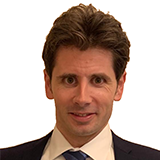
François is an industrial engineer leading a team of data scientists and cybersecurity specialists at Aurecon, focusing on critical infrastructure.
Previously, Francois held various roles in field engineering, quantitative research and operations management within large resources, energy and banking operators.
Throughout his career he has dealt with a broad range of risks including hazardous industrial processes in extreme environments, modelling financial risk in the heat of the GFC and estimating and mitigating the risk of cyber breaches on critical control systems.
Panel Q&A
Q&A for all concurrent 2 sessions.

Jennifer, a leading assurance specialist and Co-Chair of the Risk Engineering Society (Victorian Division), has more than 25 years in systems and safety engineering, on complex projects in rail, defence – maritime, land and aviation, including M1A1 Abrams, medium/heavy recovery vehicles, ANZAC Class Vessel, offshore patrol vessel (Aus and NZ), seaboats, Canterbury Multi-Role Vessel (NZ) and recently in air traffic management and airspace change.
Jennifer presents the engineering profession through volunteering on the CSIRO/STEM program, introducing the next generation to engineering and in the last 12 months has mentored four women in the industry, in various stages of their career.
Skills to pay the bills… How can Australia deliver on its renewable mega-projects in the face of an acute skills shortage and a lack of productivity?
Australia wants to be renewable superpower – and now is the dawning of ‘big hydrogen’ – but who will build it? Rethinking traditional risk allocation in renewable projects is critical to addressing the ongoing skills shortage in the industry.

Veno is an expert in the legal issues facing the construction and infrastructure sectors. He has more than 20 years’ experience advising clients from tenders and contracting through project delivery, claims and completion. He approaches his work with positivity and assertiveness and is driven to achieve the best possible commercial outcomes for his clients.
He specialises in advising on complex transactions, as well as major project dispute resolution, enabling him to provide counsel across the entire project cycle. He advises major contractors, developers and consultants across the projects spectrum – from residential and commercial developments, through to road, rail, defence, renewable energy and social infrastructure projects.
His main focus is on the delivery of major energy projects in the renewable sector acting primarily for head contractors in security of payment, arbitration and litigation across Australia.
Modelling complex problems 2023-27
It seems an obvious statement to make, but the risk environment of 2023-2027 is radically different from that of the pre-Covid years. The question that is at the heart of strategic risk and crisis management thinking, is what is the nature of that change, and are the theories, principles and frameworks that were developed over the previous generation strong and robust enough to model, prepare for and engage with the myriad threats scenarios that we are now facing on a global, national and local basis.
This presentation will look at some of the issues raised by these questions, and will offer a range of approaches building on academic, practitioner and policy perspectives that would allow us, the global strategic risk and crisis management community, to develop a realistic and realisable set of frameworks that would support future discussions and developments.

Dr David Rubens is recognised as a global authority on all aspects of strategic risk and crisis management, and particularly as it involves complex crisis environments. He established the Institute of Strategic Risk Management in 2018. It now has international chapters in more than 35 countries across Southeast Asia, the Middle East, the US, Australasia and Eastern Europe, and a vibrant global network of academic, research and think-tank institutions.
Dr Rubens is a Professor in the United Nations University European Centre for Peace and Development, where he is Director of their Strategic Risk and Crisis Management programme, is a member of the UK National Preparedness Commission and has worked with major global corporations and government agencies in helping them model and prepare for the complex risks of the 2020s.
Understanding risk: floods through unsafe, gated, dual purpose dams
The presentation offers definitions of deterministic thinking versus risk centric thinking, and how the deterministic concepts of certainty, accuracy and reliability can bring misunderstanding to thinking that has a focus on probability, on the range of possible outcomes, on the worst case, on expectation of error and on readiness to adjust.
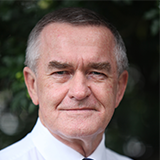
Over his career, Greg has held roles as a Chief Engineer and a Chief Instructor. His area of engineering expertise is predominately in dams and flooding and instruction has been mainly in project management and military tactics.
Greg was an advisor to victims of the 2011 Brisbane flooding and served as Doctrine and Training Manager for security search operations during the Sydney Olympics.
First principles engineering risk
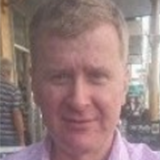
Jonathon is an experienced project developer that headed the last major Victorian coal fired power station construction methods and construction estimating team. He has gas fired power station engineering and construction experience and has major hazard facility hydrogen plant engineering, fabrication and construction experience.
Over the past 50 years, RVS Industries have specialised in the areas of cleaning the current economy and the first principles engineering to produce a new global economy structure.
Panel Q&A
Q&A for all concurrent 3 sessions.


David has been a Brisbane City Council executive for almost two decades and is currently a member of the Major Projects Leadership Team. His extensive professional experience includes leading multidisciplinary teams, procurement, project management, asset management, strategic planning, and risk management. Prior to working at Council, David spent more than a decade in engineering services, where he was involved in the design, delivery and management of infrastructure, industrial and property assets.
As well as working throughout the eastern states of mainland Australia, David has completed projects on the Indian Subcontinent, South East Asia and the Pacific Islands. David has a Bachelor of Engineering (Mechanical) (Honours) and a Master of Engineering Science (Engineering Management), both from QUT. He is a Registered Professional Engineer in Queensland, and a Chartered Fellow with Engineers Australia in the areas of Mechanical Engineering, Risk Engineering and Leadership and Management. David is the Deputy President of the Risk Engineering Society.
Lunch
Energy transition risks and opportunities: hydrogen and battery storage
As a source of clean energy, hydrogen is contributing to a sustainable future as is the move to lithium based battery power. Through development we need to ensure that safety is inherent in the design for hydrogen systems and battery systems. As an emerging technology we need to have project management and planning in place to embed a lifecycle approach to safe design of hydrogen and battery systems to protect producers, transporters, users and the public.
In this presentation I will be discussing how safety in design can be an integral part of the design, construction, operation and maintenance of a system and the specific challenges around hydrogen and battery storage.
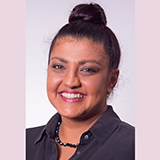
Kanchana is a risk manager and facilitator with a background in Chemical Engineering with more than 20 years of experience across a range of industries. Kanchana specialises in project risk management, safe design, technical risk and board risk. She has worked across the process, resources, infrastructure, buildings, water and energy sectors with a unique set of skills.
Kanchana has an MBA which developed her strategic and business knowledge and built on her career as a chemical/process engineer and provided opportunities to work both around Australia and Internationally.
Kanchana delivers risk leadership in the business, project and technical areas including risk facilitation and analysis, project risk, safe design (SiD) processes, HAZOP, HAZID, RAMBO, FMECA, QRA, CHAIR, lessons learned, value improvement and business resilience. Kanchana believes that risk leadership is about meaningful and engaging conversations and bringing people together to discuss what can impact their objectives and what matters most.
Living near major hazard facilities
This presentation is about the level of risk faced by surrounding communities from adverse events at large-scale chemical and energy plants. It addresses the way Victoria and other, more capable entities act to manage this risk.
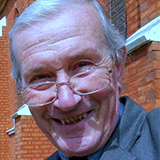
Dr Ian Thomas BScHons(ChemEng) MEngSci(EnvEng) PhD(AppSci) FIChemE FIEAust FRACI FSIA has 25 years experience in the chemical industry and 33 years experience to date as consulting engineer. His principal activity is as an expert witness for chemical-related accidents and for development proposals in proximity to major hazard facilities.
Dr Thomas is a member of the Forensic Engineering Society of Australia Inc (former Chairperson), Asset Management Council, Health, Safety and Environment Group, RACI, (former chairperson) RACI Victorian Branch Committee and the Risk Engineering Society (former National Chair).
Benefits of a risk-based approach to managing dangerous goods in the built environment
This presentation will explore multiple case studies showing the benefits of a risk-based approach to dangerous goods management in the built environment. It will demonstrate how detailed problem analysis and advanced modelling methodologies can remove the uncertainty around the potential consequences of dangerous goods incidents and how this approach has unlocked development areas currently restricted by generic rule of thumb approaches.
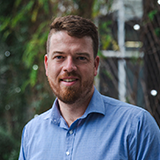
Ben Smith is a chemical engineer by background. Ben’s focus is on applying process safety principles in the built environment, as well as providing safety and risk consulting to the process industry.
Ben has designed and implemented dangerous goods storage and handling strategies across the healthcare, education and technology sectors among others, as well as delivering fire safety studies and quantitative risk assessments for multiple types of green energy projects. He has also led fire and safety audits at petrochemical facilities in several countries across the Asia-Pacific region.
Taking the Brisbane suburban rail network into the hydrogen era: the transition and its risks
The presentation will focus on energy transition aspects (from electrical to hydrogen) on the suburban rail network in Brisbane and will elaborate on risks related to this transition. The risks will be assessed based on introducing new trains to the rail network and some engineering controls will be proposed.
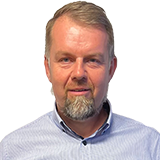
Jacek is a qualified and highly experienced Chartered transport engineer. He holds a Masters in Transport from one of the most prestigious technical universities in Europe – Warsaw University of Technology – and a PhD in Engineering from Griffith University.
In his professional and scientific career, Jacek has worked in consultancy, product supply and construction, lead feasibility studies for construction projects valued over €350M, authored Australian Railways industry standards and a guideline, prepared a number of papers to journals and international conferences and presented the papers, became an Associate Editor of the IEEE-Intelligent Transportation Systems Magazine, and started a business.

Helder is an accomplished rail systems engineering specialist with an extensive background of more than 24 years in the field. He has a degree in Civil Engineering with a major in Environmental Engineering from QUT, and a Masters Business Administration in Technology Management.
Helder has held significant positions such as Railsystems Integration Manager for the RIS Alliance on the Cross River Rail project, Rail Manager on the Moreton Bay Rail project, Rail Operations Manager for the Regional Rail Link from Footscray to Deer Park, seconded Queensland Rail Project Manager for the TrackStar Alliance, and Construction Project Manager with Queensland Rail.
Planetary boundaries and environmental tipping points: how these can be used to identify risks in infrastructure, defence and energy natural resources
This presentation provides an updated analysis of the literature regarding the planetary boundaries, and environmental tipping points, before combining the two areas. From this analysis a framework is generated and key areas for resilience and adaptation building to minimise overall, and cascading risk are identified for the areas of infrastructure, defence and energy natural resources.

Tom Cernev is an engineer at Shoal Group in Adelaide with degrees in Mechanical Engineering and Theoretical Physics from the University of Adelaide and a Master’s in Engineering for Sustainable Development from the University of Cambridge.
Tom is a Research Affiliate at the Centre for the Study of Existential Risk at the University of Cambridge, the South Australian Chair of the Sustainable Engineering Society for Engineers Australia, and a contributing paper author for the UN Office for Disaster Risk Reduction.
Panel Q&A
Q&A for all concurrent 3 sessions.


